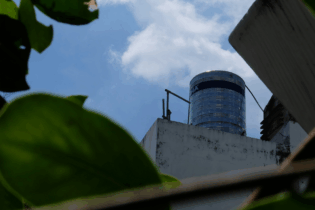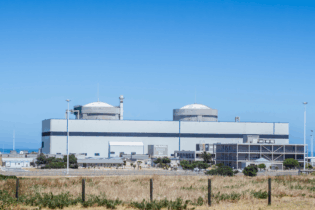Public-private sector investment is desperately needed to ensure that South Africa’s municipalities can modernise and acquire waste processing facilities to divert waste from landfill. The City of Johannesburg alone estimates its investment need in this critical infrastructure to be about R3 billion, according to its Managing Director who was part of a panel that participated in the first public-private sector liquid board packaging (LBP) colloquium hosted by Fibre Circle, a Producer Responsibility Organisation for the paper and paper packaging industry.
This was just one of the issues raised at the colloquium that took place recently on 28 September 2023. Fibre Circle is a not-for-profit, public benefit company tasked with implementing the Extended Producer Responsibility (EPR) scheme for the paper and packaging industry. Broadly speaking, the manufacturers of paper and packaging pay fees to the scheme to ensure that their post-consumer packaging is diverted from landfill as much as possible and reused in line with the principles of the circular economy. “We are facing a crisis in waste management with fast diminishing landfill airspace, and we all have a role to play in finding sustainable solutions that not only divert waste from landfill but create the much-needed jobs for the South African economy,” says Edith Leeuta, CEO of Fibre Circle. “An event like the colloquium we had is very important because it brings together multiple stakeholders from the public and private sectors, so that we can begin to speak together about what the need is and what we can collectively do to promote the circular economy of the country. We know that it cannot be business as usual.”Two panels discussed the South African waste management policy landscape and the aims of the EPR regulations in promoting good practice in sustainable waste management and advancing the circular economy of the country. The panelists included Kgauta Mokoena (Department of Forestry, Fisheries and the Environment), Bukelwa Velebayi-Njingolo (Pikitup), Alinah Mthembu (Department of Science and Innovation), Bala Nengovhela (SALGA), Scott Ferguson (Mpact Recycling), Terry van der Walt (Nampak), Professor Johann Gorgens (Stellenbosch University) and Professor Kevin Harding (Wits University).
Some key points emerged from these wide-ranging discussions:- Diversion from landfill is a key goal for the paper and paper packaging industry. However, agreement needs to be reached on how targets are going to be reached and the collaboration required to achieve these set targets. What does “good” look like?
- Public and private sector partnership is critical to ensure that our collective vision of preserving the environment for current and future generations becomes a reality and that investment is made in the right programmes to facilitate education and awareness for all South Africans. In addition, links between the industry and the academic institutions need to be strengthened so that research is focused on what the industry needs to design recyclable packaging. By the same token, municipalities need to ensure that their integrated waste management plans enable separation at source which will promote the collection of recyclable materials. Municipalities also need to ensure that consistent services are provided to all citizens in the collections value chain.
- Infrastructure is a key priority. There has been little or no investment in infrastructure for several years. Without waste processing infrastructure, high volumes of different kinds of paper and packaging waste cannot be processed.
- Investment in the waste management sector is problematic. Following on from the previous point, considerable investment will be needed to bring municipal waste management capabilities up to scratch, as the figures suggested for the City of Johannesburg. The fiscus does not have the capacity to fund this scale of investment, so private sector investment is essential. While public-private partnerships are possible, they have proved difficult to manage; alternatives models (such as build, operate and transfer) should be explored. The barriers to private investment need to be investigated thoroughly.
- Transition to a circular economy needs to include all members of the value chain. In particular, the informal waste pickers need to be integrated into the waste management system as it becomes more circular.
- Separation at source is critical. The cleaner the material, the more efficient the mills are in producing new products for the market. Given the various challenges at municipal landfill sites, households have to be persuaded to separate their waste so that paper and packaging waste is not contaminated by food and other organic waste materials.
- Incentivisation is key. To drive the behaviour change required to promote separation at source, the industry needs to come up with ways to incentivise citizens to play their role particularly in underprivileged areas. Incentivisation will also make it more likely that waste pickers will collect more types of packaging waste, including LBP. A well-understood incentive scheme would help reduce the amount of waste that does not make it into the formal waste management process.
- Government has a key role to play. It is the 2nd year of the industry-led EPR scheme and not all producers are contributing to the collection and recycling of their post-consumer packaging. Government needs to ensure that compliance and enforcement is carried out to those organisations who choose to ignore their obligations as set out in the regulations. Municipal by-laws should also be used to promote separation at source.








